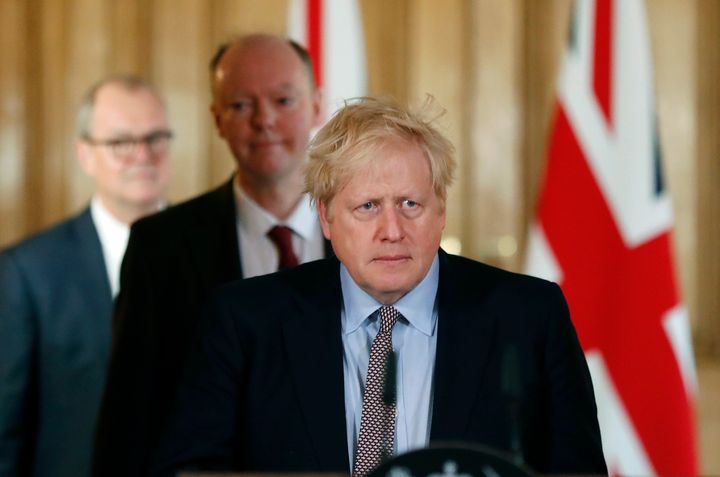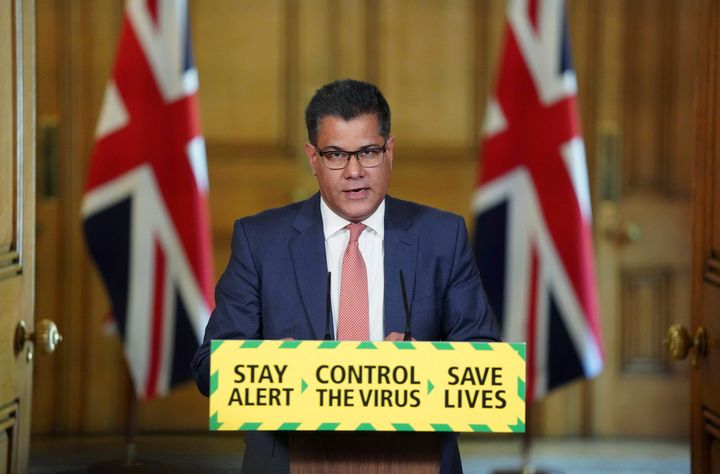Black, Asian and minority ethnic (BAME) communities may have been less trusting of Covid-19 health advice due to a lack of inclusive messaging, caused in part by the scarcity of non-white experts at the Downing Street briefings.
A recent report by the Wellcome Trust found fewer than half (45%) of BAME people had “complete” or a “great deal of” trust in information from government scientific advisers, compared to 65% of white people.
The survey of more than 2,650 people, carried out at the height of the outbreak in the UK, found just 38% of Black respondents said they trusted the government’s scientific advisers, compared with 52% of Asian people.
Of the 92 daily Downing Street press conferences that took place between March 16 and June 23, just two BAME scientific advisers or public health officials appeared – England’s deputy chief medical officer, Professor Jonathan Van Tam, and Dr Nikki Kanani, NHS England’s medical director for primary care.
On the ministerial front, chancellor Rishi Sunak, home secretary Priti Patel and business secretary Alok Sharma were the only BAME figures to address the public at the coronavirus briefings. Not one Black person was seen behind the Downing Street podiums.

This lack of representation could play a part in why people from marginalised groups feel “disconnected” from the government’s coronavirus messaging, says Prof Kamaldeep Bhui, a psychiatry and epidemiology expert at the Nuffield Department of Primary Care Health Sciences at the University of Oxford.
“Emotionally, we connect with and are influenced by people who are more like us – not just by ethnicity, but by age and gender. So in this case, people from marginalised groups are asking, are these people like us – and largely they’re not,” he told HuffPost UK. “If minorities are living in positions of precarity, they’re less likely to trust from the start.
“This isn’t irrational. This is built on an experience of society where people experience multiple disadvantages and face inequalities and discrimination. They’re going to be less likely to trust the messaging if it’s coming from the authorities.”

A crucial problem with the government’s public health messaging was that it failed to take into account the needs and levels of health literacy of various communities.
“Different ethnic groups have different perceptions of what illness is, what infection is or what a pandemic is,” said Bhui.
“Marginalised groups, which include but are not limited to ethnic minorities, are particularly challenged because they may not have the same beliefs and health model. So the messaging should have been tailored to different literacy groups.”
The Stay Home, Protect the NHS, Saves Lives slogan used at the peak of the outbreak also failed to account for all the key and frontline workers who continued going into work while the rest of us could stay in the safety of our homes.
Instead, some of the initial messaging actually made things worse. “By pathologising them and suggesting they were drivers of problems, there was increasing levels of discrimination against minorities,” Bhui adds.
“We’ve seen this with some Chinese people or some Muslim people in the northern parts of the UK, where they were perceived as not conforming to public health advice.”
The problem with the government’s initial one-size-fits-all approach to public health messaging is that it rarely works, says Dan Wellings, of the policy team at the King’s Fund. He says that needs to change.
“The results of this study show how important it is for clear and effective messaging to start with those communities,” he said. “In order to gain credibility in those communities, you need to understand from the first instance what’s going to work for them and who they will trust.
“A lot of this work needs to be done at local level by people who are connected and familiar with the communities that they serve.”
If the government’s coronavirus messaging or its messengers haven’t been inclusive enough, then neither have the reporters on the other side of the podium. Of the more than 550 questions at the Downing Street briefings, only a handful of them came from BAME journalists – among them were HuffPost UK’s deputy political editor, Arj Singh, and news reporter Nadine White.

Anne Alexander, senior political producer at Good Morning Britain, was the first ever Black female Lobby journalist in Parliament. Eighteen years on, she remains the only Black female Lobby journalist. And she can count the number of BAME colleagues she’s worked with using just one hand.
“We like to think the news is objective and impartial, but in reality news is subjective,” she told HuffPost UK. “How we decide what is important and how it should be reported is coloured by our upbringing and our background. That’s why it’s important to have a mixture of backgrounds.”
Although BAME journalists do not always have to ask questions only relating to “BAME issues”, they can often call attention to topics that are neglected or considered of secondary importance to the overwhelmingly white, middle class reporters.
When our reporter pressed health secretary Matt Hancock for a response on a study that found BAME people were disproportionately fined under coronavirus rules, Alexander says there was “much celebration” on social media.
“If you look at the stories that emerged about the amount of ethnic minorities who were being adversely impacted by the coronavirus, a lot of that came from journalists like Nadine and other who kept on highlighting it. This was an important issue and it was being pushed by Black journalists.”
Bhui said the pandemic served as a “wake-up call” for the government to recognise the gross inequalities and social injustice that already existed long before the pandemic.
“Covid-19 just made things worse, and it’s minorities who are getting it in the neck. Not only as frontline workers, but as citizens.”
